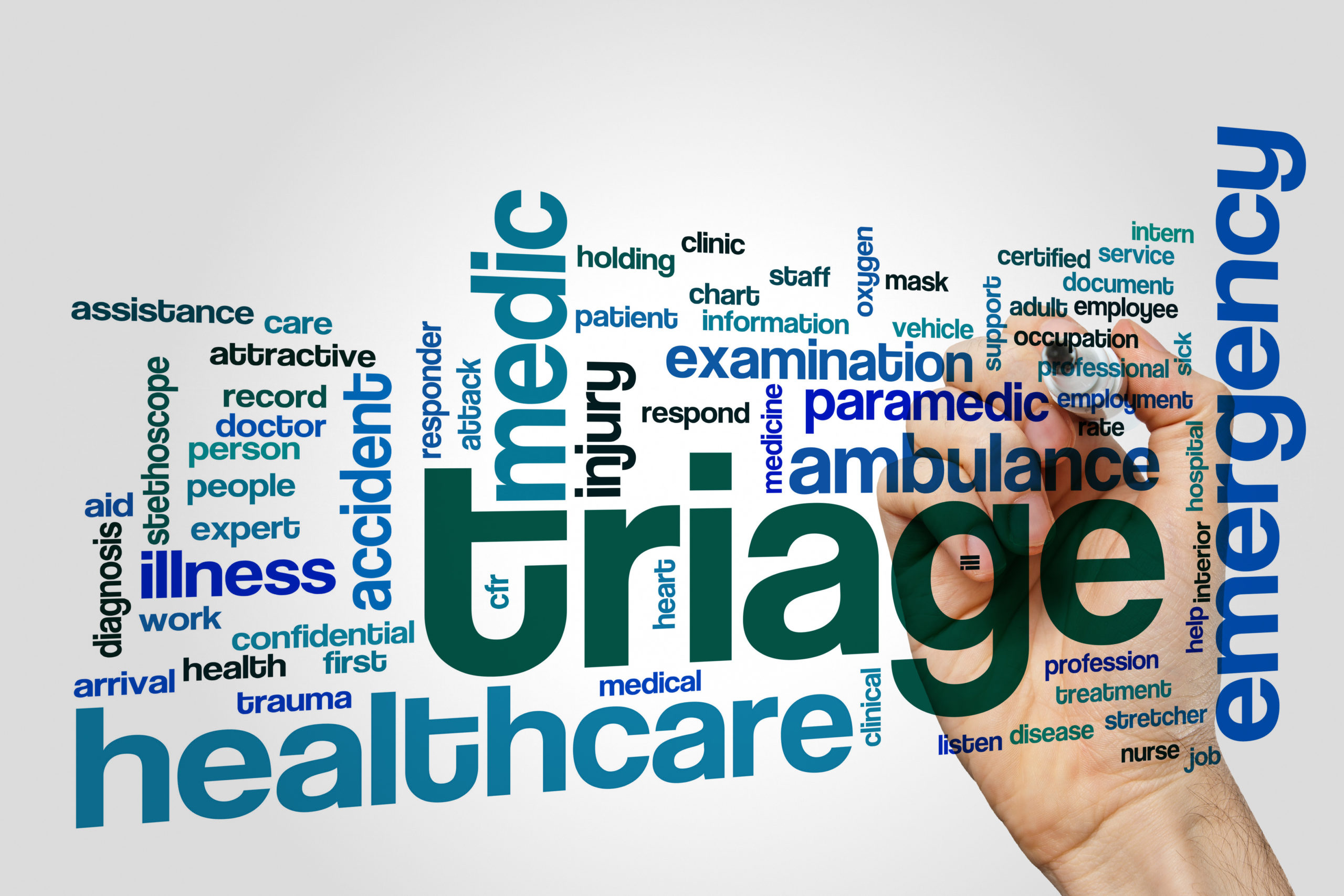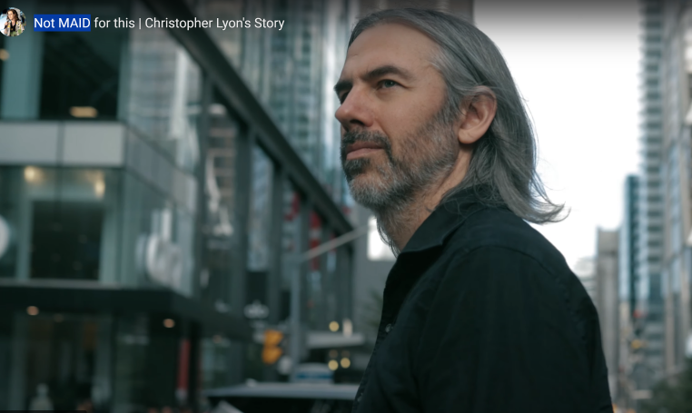
Ontario Health is considering implementing a triage protocol during the COVID-19 pandemic to guide decisions on whom gets ICU treatment when the healthcare system is overwhelmed. This document is important to review since the triage protocol will reflect what kind of society we are and will impact what kind of society we will have become when the pandemic is over.
You can find the triage protocol here. Triage Protocol.
As with every policy document, there is a philosophical approach which underlies it. In the case of the Ontario triage protocol, a consequentialist approach is cited as an ethical framework, but it is not clear from the document if that approach is used consistently throughout.
A consequentialist approach judges whether or not something is right by the outcomes. It is a utilitarian approach. It does not recognize that some acts are intrinsically wrong (like murder). Instead, acts are only judged on their outcomes (reduce suffering). This can be problematic if it is the only criteria for decision-making, as it discounts the intrinsic worth of each human being.
In the case of the Ontario triage document, the stated guiding principles are:
1. Utility – in the allocation of resources for the greatest incremental benefit.
2. Proportionality – the triage response should not adversely affect more people than would have been affected if we had used a “first come, first served” approach.
3. Fairness – clinically-relevant criteria should be used first and foremost to allocate resources. Priority should not be given to anyone on the basis of socioeconomic privilege, or political rank.
While done under the pressure of the COVID pandemic, it is only right that we pause and discuss the protocol both in the medical profession and more widely among policy makers and the general public.
It is vital to engage everyone in the ethical issues related to pandemic planning so that there can be morally defensible policy making. Transparency and the opportunity for feedback are important if public officials and the medical profession wish to maintain public trust.
Public trust appeared closely associated with accurate information and equitable resource-sharing. ~ Canadian Pandemic Surveys
Ethical Considerations
When reviewing the Triage Protocol, it is important to understand the ethical principles that have been used. One useful source to understand and evaluate the ethical principles used is the paper: Stand on Guard for Thee
The paper identifies four key issues:
1. Health workers’ duty to provide care during a communicable disease outbreak
2. Restricting liberty in the interest of public health by measures such as quarantine
3. Priority setting, including the allocation of scarce resources
4. Global governance implications, such as travel advisories
For the purposes of the triage document, the third issue is relevant. In the Stand on Guard paper, the authors identify the substantive values most applicable to this issue as: equity, trust, solidarity and stewardship.
They recommend the following:
1. Governments and the health care sector should publicize a clear rationale for giving priority access to health care … to particular groups, such as front-line health workers and those in emergency services. The decision makers should initiate and facilitate constructive public discussion about these choices.
2. Governments and the health care sector should engage stakeholders … in determining what criteria should be used to make resource allocation decisions …should ensure that clear rationales for allocation decisions are publicly accessible and should provide a justification for any deviation from the pre-determined criteria.
3. Government and the health care sector should ensure that there are formal mechanisms in place for stakeholders to bring forward new information, to appeal or raise concerns about particular allocation decisions and to resolve disputes.
Stakeholder Engagement
In the case of the Ontario triage protocol it is not clear which stakeholders have been consulted. Due to the nature of the triage protocol, it is vital that governments facilitate an open discussion.
The lack of consultation and the concerns about the triage protocol prompted an open letter to the Premier of Ontario with specific recommendations including:
1. Persons with disabilities cannot be deprioritized for critical care on the basis of their disability.
2. The Triage Protocol must clearly state that clinical judgment must not be informed by bias, stereotypes, or ableism.
3. Persons with disabilities cannot be deprioritized for critical care based on the supports they receive for daily living.
4. The Triage Protocol must clearly ensure that persons with disabilities receive necessary disability-related accommodations.
The Disabled Community
There is a lot of fear in the disabled community with the pandemic and the triage protocols that are being discussed.
Nancy Hansen recently wrote an article for the CBC outlining these concerns. As she points out,
Much of what is known about disability does not come from people with disabilities themselves, but rather numerous outdated beliefs about disability and disabled people.
It is clear that there is need for public engagement on the development of triage protocols and that the policy makers must reach beyond the medical experts in developing them.
This is certainly new ground for all of us. In the CHEST Consensus Statement published in 2014 and referred to in the current Triage protocol, it was noted that “Ethical and efficient critical care triage is a complex process that requires significant planning and preparation.” and they further note that in their substantive review of the literature, “no studies of sufficient quality were identified.”
While a lot of work has gone into the protocol it would benefit from comment from the wider community, particularly groups who have lived experience with challenging health conditions.
Defining Exclusion Criteria.
What are the Exclusion Criteria going to be?
The appendix of the Triage Protocol states that exclusion criteria traditionally have fallen into two categories- (1) criteria that indicate a low probability of surviving an acute illness, and (2) criteria that indicate a low probability of surviving more than a few months regardless of the acute episode of critical illness”.
In the 2006 pandemic plan referred to in the appendix, strict age cut-offs were applied, including anyone older that 85 years would not get ICU treatment
This straight age cut-off has been removed from the current triage document.
Interestingly, the Ventilator Allocation Guidelines currently being used in New York use a different triage approach: “to identify patients with a short life expectancy irrespective of their current acute illness, in order to prioritize patients most likely to survive with ventilator therapy. The medical conditions that qualify as exclusion criteria are limited to those associated with immediate or near-immediate mortality even with aggressive therapy”
The goal of the Ventilator Allocation Guidelines is “an effort to offer the best possible care under gravely compromised conditions to support the goal of saving the most lives in an influenza pandemic where there are a limited number of available ventilators.”
In the Ontario triage protocols there are some exclusion criteria that survived from the previous pandemic plan and remain vague. There is a need for further clarification.
For example, exclusion criteria like severe baseline cognitive impairment (unable to perform activities of daily living independently due to cognitive impairment) due to a progressive illness and advanced irreversible neurodegenerative disease (e.g. Parkinson Disease, Amyotrophic Lateral Sclerosis) need to be more clearly defined. How severe is severe? How advanced is advanced?
The triage document is moving from an arbitrary 85 age cut-off to a frailty index to make decisions. But this is where the disabled community could offer vital insight into how to interpret the frailty scale and the vague ‘cognitive impairment’ definition.
In the CHEST consensus statement they indicated that “for a prognostic score to be useful, it must reliably predict mortality with an initial cut-off of greater than 90% mortality being reasonable to consider excluding a patient from admission to the ICU.”
Are the scales that are being used to measure exclusion criteria that reliable?
Appealing Triage Team Decisions
There are no options for the doctor, patient or family members to have the ability to appeal a triage team decision. The triage document says that disagreements between the physicians on the exclusion criteria ‘should be resolved by consensus among those at the bedside if possible.’ The triage committee may also help resolve disagreements but there is no mechanism or role for patients, or substitute decision-makers in the process. This is a significant problem with this document.
Further Points to Consider
Another framework for evaluation is captured in a Joint Statement from the Witherspoon Institute. The Joint Statement on Moral Guidance on Prioritizing Care during a Pandemic identifies three possible misinterpretations or temptations which must be avoided.
1. Allowed casualties are not intentional killings. There is a distinction between accepting death and killing. The pro-euthanasia camp tends to blur this distinction and it is important to maintain it. As the authors note: “…intentional killing is not the same as allowing a person to die as a proportionate side effect of an otherwise sound moral choice.”
As they so rightly caution: “choosing who will live and who will die” is a dangerous way of expressing what we are about in trying to save whom we can, while mourning the loss of those we are unable to save.
2. Human lives are all of equal value. While some critical Covid-19 interventions need to go to front-line health care workers, particularly workers who face a high risk of infection and whose training makes them difficult to replace, the authors note that these priorities should not undermine the core conviction that “the lives of all human being are of inherent, equal, and indeed incalculable value.”
3. Expressive significance matters. In triage protocols the maximization of benefits can be understood in one of two ways, either saving the most individual lives or as saving the most life-years. The first approach focuses on immediate or near-immediate mortality while the second approach could, in the words of the authors, “come to be understood in ways that would cut against the claims of the elderly, the disabled, and those who seem to have little to contribute.”
The authors express their concern this way:
A policy of almost always prioritizing the young over the old could reflect and entrench a bigotry already widespread. It could lead to a further devaluation of the lives of the elderly, which could work severe and often lethal harms far beyond the triage scenarios imposed by public health emergencies.
You Might Also Like
Follow US:




